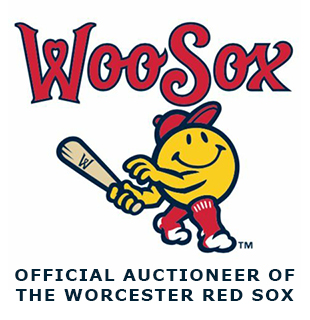Art has been part of our history of man since Neanderthals first drew figures on cave walls over 40,000 years ago. Art appears in many forms. Pieces may be sculpted from marble and other stone, handcrafted from metal or wood, formed from pottery or created from other mediums. However, when we handle the contents of an estate or a consignor contacts us to sell a few items, the art forms that we most typically encounter are paintings and prints.

Edmund Adler painting sold for
nearly $10,000 in our April auction
There are a number of things that you can do to determine whether you have a painting worth enough to send your family on a Caribbean cruise or if it would be better left to hide a hole in your wall.
First, you want to see whether it is a print or painting. An old oil painting may be easy to spot but you may need to closely examine some pieces with a magnifying glass to differentiate between some prints and paintings. If you see a copyright or if there is a pattern of small dots, it’s a print or lithograph.
If you determine that it’s a painting, try to determine the age. The frame may help with this. Nineteenth century frames were often made of wood covered by gesso (a hard plaster of Paris compound) in very ornate designs covered with gold gilt. You should also check the back of the painting. An oil painting should show discoloration of the canvas appropriate to its age.
When you have determined that you have an actual painting, look for a name and date. Check to see if the artist is listed. A listed artist is someone who is recognized by the art community and appears in reference books such as Davenport’s Art Reference Guide and on major art related websites. Most of the listed artists have formal training but many “outsider art” creators are being recognized and their pieces can sell for strong prices as well. Reference guides and websites allow you to see past auction prices of listed artists.
There are many factors that determine the value of a painting. Oil paintings are typically more valuable than watercolors. The subject matter is important. If a person or place can be identified, it will make the piece more desirable. A painting of a famous figure is more desirable than someone who led a more ordinary life. Older paintings typically have greater value than paintings by modern artists. Of course, there are exceptions to some of these rules. Pablo Picasso and Andy Warhol died in 1973 and 1987 respectively yet their paintings can sell for $100’s of millions of dollars.
Tastes and opinions constantly change in the art world. During his lifetime, Norman Rockwell had critics who believed that his paintings lacked artistic merit. Recently, “Saying Grace” by Rockwell sold for $46 million at auction.
Even if you’ve examined your piece closely and determined that it is a print, there may still be good news. Posters from the 1800’s and early 1900’s can often be worth thousands. Some signed limited edition prints by famous artists can also be quite valuable although you have to be careful of fakes. Even some unsigned prints by famous artists can be desirable. We’ve sold prints by American painter and illustrator Maxfield Parrish that have brought nearly $1,000. Now might be the right time to sell that painting or print in your den and plaster over that hole you’ve been trying to hide!
If you have any questions about antique auctions and estate sales, call Wayne Tuiskula, Auctioneer/Appraiser at 508-612-6111 or email us today.
Our articles are published in the Webster Times, Spencer New Leader, Auburn News, Blackstone Valley Tribune, Charlton Villager, Killingly Villager, Putnam Villager, Sturbridge Villager, Thompson Villager and Woodstock Villager.




